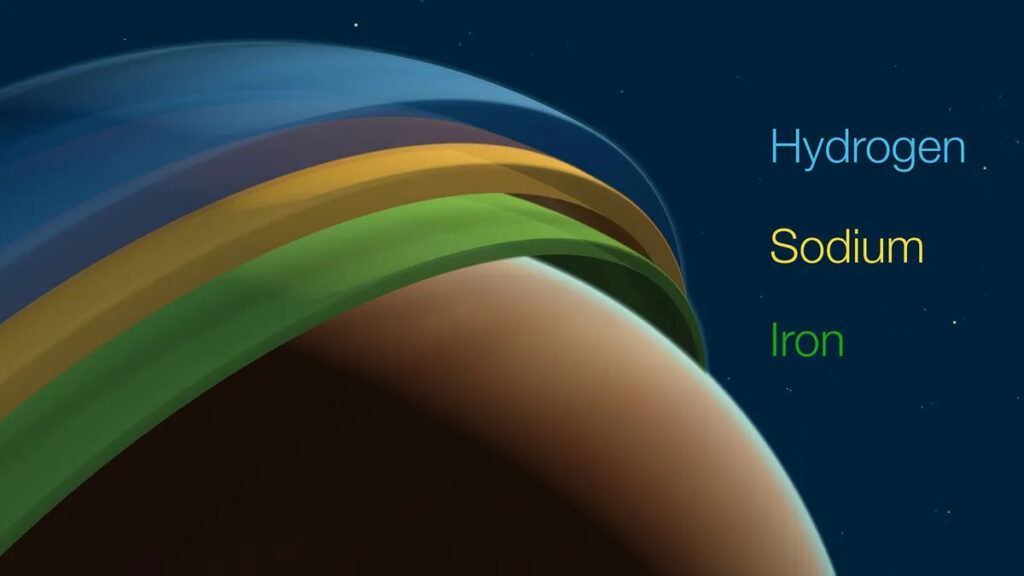
A Hellish World Beyond Our Solar System
Deep in the cosmos, 900 light-years from Earth, lies WASP-121b, a world so extreme it defies imagination. Nicknamed Tylos, this exoplanet falls into the category of “ultra-hot Jupiters”—gas giants that orbit perilously close to their stars. Completing an orbit in just 30 Earth hours, Tylos endures scorching temperatures of 3,320°F (1,800°C), hot enough to vaporize metals.
The Fastest Winds Ever Recorded
Astronomers recently mapped Tylos’ atmosphere in unprecedented 3D detail, revealing a layered composition of iron, sodium, hydrogen, and titanium—elements carried by winds of unimaginable speed. A colossal jet stream, racing at 26.8 kilometers (16.7 miles) per second, now holds the record for the fastest known atmospheric winds in the universe.

A World of Extreme Contrasts
The planet’s day and night sides are locked in a battle of extreme temperatures, with a 1,250°F (950 Kelvin) difference driving these violent winds. Unlike Earth, where jet streams meander at a few hundred miles per hour, Tylos’ ferocious gales could circumnavigate our planet in just over a minute.
What Tylos Teaches Us
Studying such extreme exoplanets helps scientists understand atmospheric physics beyond our solar system. The chaotic winds of Tylos challenge our understanding of how weather works on distant worlds—offering clues to how gas giants evolve and survive under such hostile conditions.
As telescopes like JWST continue peering into the cosmos, Tylos is just the beginning. How many more unthinkable worlds are waiting to be discovered?
Sources: ScienceAlert, Space, TechExplorist, TheTimes, DiscoverMagazine.



